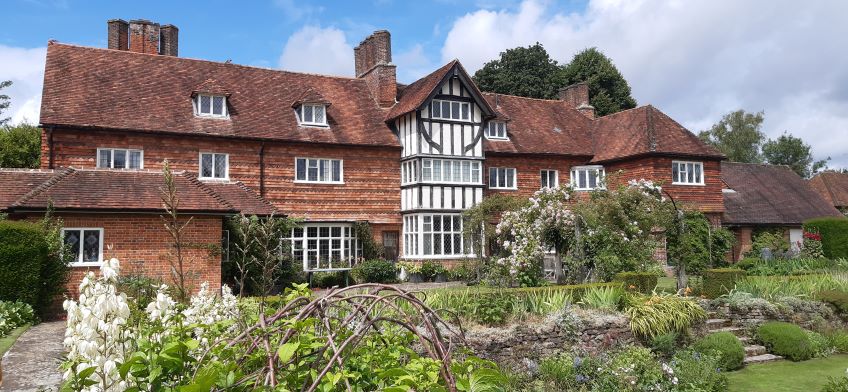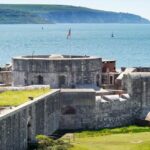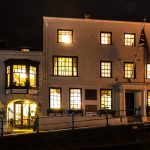By Nigel Heath
Nestled amid the trees in the North Hampshire Downs, is the delightful little village of Upton Grey.
Here back in 1908, the famous garden designer, Gertrude Jekyll, was commissioned by Charles Holme, a leading figure in the Arts and Crafts Movement, to design and lay out a garden at his manor house.
But over the passage of time, the garden became completely overgrown and eventually lost, until it was rediscovered by, John and Rosamund Wallinger, who moved into the, by now, semi derelict property in 1984.
The couple have spent many years restoring the garden to its former glory and it was indeed, a magnificent floral delight, when my, gardening enthusiast wife, Jenny, and I made it our first stop on our way from our home, near Monmouth, for a few days in The New Forest.
There was no one about when we drove in, and to our surprise, a sign directed us to park in front of the house, after which, we found our way around to a garden room where we met Rosamund.
She invited us inside to view copies of Gertrude’s original plans, which she and her husband had managed to track down to a collection held at The University of California in Berkeley.
As a result, the couple have created what is believed to be the most authentic Jeykll garden in existence.
From Upton Grey, it was only a nineteen-mile drive through rolling Hampshire countryside, to the National Trust’s magnificent neo-Georgian mansion and country estate in the hamlet of Hinton Ampner.
This house was painstakingly rebuilt and furnished after a devastating fire in 1960, and it is now filled with a treasured collection, including European paintings, furniture, and ceramics to compliment its elegant gardens and parkland.
Unfortunately, it was closed, but luckily the grade two listed, All Saints Church, in the grounds, dating back to Saxon times, which was rebuilt in the 13th Century, and again in the 19th Century, was open.
We enjoyed viewing its two beautiful stained-glass windows, the Pillar of Cloud and Pillar of Fire from the Book of Exodus chapter thirteen.
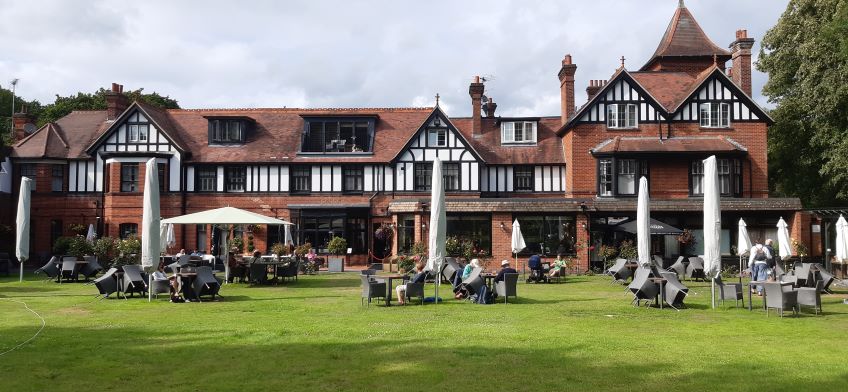
Our base for the next three nights, was an hour’s drive further on at the Classic Forest Park Country House Hotel, surrounded by woodland and opened back in 1901 specifically to serve the rich and the famous, and which still retains its yesteryear air of comfort and grandeur.
After an excellent supper and hearty breakfast in the large feature dining room overlooking the extensive gardens, we made the short drive across to Lymington.
Here lady luck took a shine to us because, besides the glorious morning, when a dismal day had been forecast, we pulled in to the very last space in the small long stay car
park on the Town Quay.
Now began a bracing seven-mile coastal walk, along the meandering sea wall, poised between sea, sky and salt marshes and with magnificent views across to the Isle of Wight, all the way to the small yacht filled harbour at Keyhaven.
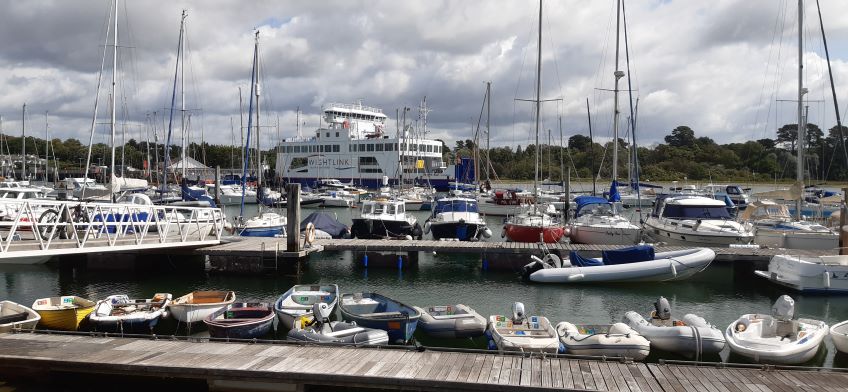
The salt sea air was alive with the peep, peep, peeping of oyster catchers, but had we stepped out some two-hundred years earlier, we would have come upon a heavily industrialised landscape devoted to the extraction of salt from the marshes.
We popped in to the centuries old Gun Inn, with its wooden floors and old oak beams, for lunch, while waiting for a taxi to take us back to Lymington.
While the town’s bustling harbour, the busy base for an Isle of Wight ferry, was alive with nautical and tourist activity, we strolled up from the quay, through a short cobbled, meander of shops, to reach the town’s main street with its many old and elegant buildings.
Once back at the hotel, it was a toss-up between crossing the road and taking a short walk into the forest, or relaxing in the sunny garden with a pre-dinner drink. Needless-to-say, we chose the garden option.
A garden was very much top of the agenda the following morning, when we set out on a thirty-minute drive all through the forest and parkland, stopping for the occasional pony and her foal, casually crossing in front of us, or munching grass by the roadside.
Our destination was the two-hundred-acre Exbury Gardens, miniature steam railway and woodlands estate, bordering the Beaulieu River, created back in 1919 and still maintained by the Rothschild family.
Exbury, looked after by a full-time team of eight gardeners, plus two trainees and eighteen volunteers, is home to a spectacular collection of woodland, herbaceous, contemporary, formal and wild flower gardens.
It is also famed for its fabulous collection of rhododendrons, lining the paths, and at their most colourful in April and May.
Sadly, like the much smaller house at Hinton Ampner, the family mansion was closed for repairs, but luckily, the nearby Five Arrows Gallery was open.
Here we chatted with, Colin Lewis, a member of the Look Twice group of eight local artists, about their annual summer exhibition of paintings in a variety of mediums.
We spent a most enjoyable few hours wandering around the extremely well-tended gardens and impressive woodlands, featuring many fine specimen trees, including the giant Californian redwoods and picnicked at a viewpoint overlooking the River Beaulieu.
The time seemed to fly past on floral wings and then it was time to head back to the hotel for our final evening.
It was Jenny’s first foray into Britain’s smallest national park, but with so, so much more to see and do, we knew it would not be our last.

